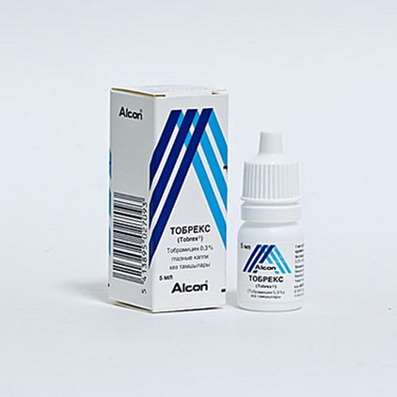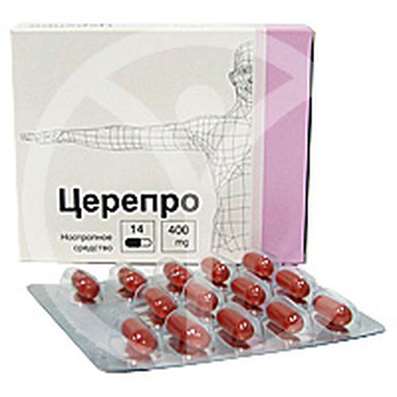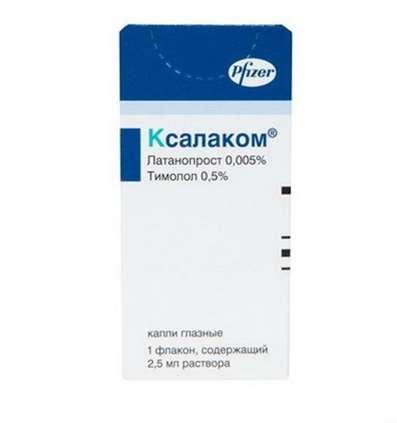Instruction for use: Kytril
I want this, give me price
Active substance Granisetron
ATX code A04AA02 Granisetron
Pharmacological group
Antiemetics
Serotonergic drugs
Nosological classification (ICD-10)
R11 Nausea and vomiting
Postoperative vomiting, Nausea, vomiting, Vomiting in the postoperative period, Vomiting drug, Vomiting on the background radiation therapy, Vomiting indomitable, Vomiting with radiation therapy, persistent vomiting, anacatharsis, Postoperative nausea, Vomiting during chemotherapy, Vomiting of central origin, Vomiting on the background of cytostatic chemotherapy, persistent hiccups, repeated vomiting
T66 Unspecified radiation effects
Radiation Disease, Diarrhea radiation, Gastrointestinal syndrome with irradiation, Radiation sickness, Radiation disorders of mucous membranes, Irradiation chronic, Osteoradionecrosis, Acute radiation sickness, Acute and chronic radiation injuries, Acute radiation syndrome with radiation therapy, Subacute and chronic radiation sickness, Radiation Neuropathy, Radiation edema, Radiation damage to the nervous system, Radiation immunodeficiency, Radiation syndrome, Radio-epileleitis, Radiation acute syndrome, State after irradiation, Cytopenia due to previous radiation or chemotherapy, Cytopenia radiation, Cytopenia due to radiation therapy, Cytopenia due to chemotherapy
Y43.1 Adverse reactions in the therapeutic use of anticancer antimetabolites
Mercaptopurine Treatment
Y43.2 Adverse reactions in the therapeutic use of natural anticancer drugs
Y43.3 Adverse reactions in the therapeutic use of other anticancer drugs
Z100 * CLASS XXII Surgical practice
Abdominal surgery, adenomectomy, Amputation, Coronary angioplasty, Angioplasty of the carotid arteries, Antiseptic skin treatment for wounds, Antiseptic Hand, Appendectomy, atherectomy, Balloon coronary angioplasty, Vaginal hysterectomy, The coronary bypass, Interventions in the vagina and cervix, Interventions on the bladder, Intervention in the mouth, Restoration and reconstructive surgery, Hand hygiene of medical personnel, Gynecologic surgery, Gynecological intervention, Gynecological surgery, Hypovolemic shock during operations, Disinfection of purulent wounds, Disinfection of wounds edges, Diagnostic intervention, Diagnostic procedures, Cervical Diathermocoagulation, Long-surgery, Replacing the fistula catheters, Infection in orthopedic surgery, Artificial heart valve, cystectomy, Short-term outpatient surgery, Short-term operation, Short surgical procedures, Krikotireotomiya, Blood loss during surgery, Bleeding during surgery and in the postoperative period, Kuldotsentez, laser photocoagulation, laser coagulation, retinal laser coagulation, Laparoscopy, Laparoscopy in Gynecology, CSF fistula, Small gynecological operations, Small surgical procedures, Mastectomy and subsequent plastic, mediastinotomy, Microsurgical operations on the ear, Mukogingivalnye operation, suturing, Minor surgery, neurosurgical operation, Immobilization of the eyeball in ophthalmic surgery, testectomy, pancreatectomy, Perikardektomiya, The period of rehabilitation after surgery, The period of, convalescence after surgery, Percutaneous transluminal coronary angioplasty, Pleural thoracentesis, Pneumonia postoperative and posttraumatic, Preparation for surgical procedures, Preparation for surgery, Preparation of the surgeon's hands before surgery, Preparation of the colon for surgical procedures, Postoperative aspiration pneumonia in neurosurgical and thoracic surgery, Postoperative nausea, Postoperative bleeding, postoperative granuloma, postoperative shock, The early postoperative period, myocardial revascularization, Radiectomy, gastric Resection, bowel resection, uterine Resection, liver Resection, enterectomy, Resection of part of the stomach, Reocclusion of the operated vessel, Bonding tissues during surgical procedures, Removal of sutures, Condition after eye surgery, Condition after surgery, Condition after surgery in the nasal cavity, Condition after gastrectomy, Status after resection of the small intestine, Condition after tonsillectomy, Condition after removal of the duodenum, Condition after phlebectomy, Vascular surgery, Splenectomy, Sterilization of surgical instruments, Sterilization of surgical instruments, sternotomy, Dental surgery, Dental intervention in periodontal tissues, strumectomy, Tonsillectomy, Thoracic surgery, total gastrectomy, Transdermal intravascular coronary angioplasty, Transurethral resection, Turbinektomiya, Removal of a tooth, cataract surgery, Removal of cysts, tonsillectomy, Removal of fibroids, Removing the mobile primary teeth, Removing polyps, Removing broken tooth, Removal of the uterus body, Removal of sutures, Urethrotomy, Fistula likvoroprovodyaschih ways, Frontoetmoidogaymorotomiya, Surgical infection, Surgical treatment of chronic limb ulcersm, Surgery, The surgery in the anal area, The surgery on the colon, Surgical practice, The surgical procedure, Surgical interventions, Surgery on the gastrointestinal tract, Surgical procedures on the urinary tract, Surgical procedures on the urinary system, Surgical intervention of the genitourinary system, Surgical procedures on the heart, Surgical manipulation, surgery, Surgery on the veins, Surgical intervention, Vascular surgery, Surgical treatment of thrombosis, cholecystectomy, Partial gastric resection, transabdominal hysterectomy, Percutaneous transluminal coronary angioplasty, Percutaneous transluminal angioplasty, Coronary artery bypass, tooth Extirpation, Extirpation of milk teeth, pulpectomy, pulsative cardiopulmonary bypass, tooth Extraction, teeth Extraction, cataract extraction, Electrocoagulation, endourological intervention, episiotomy, Etmoidotomiya, Complications after tooth extraction
Composition and release form
Concentrate for solution for infusion 1 ml
granisetron (as granisetron hydrochloride) 1 mg (1.12 mg)
excipients: sodium chloride; citric acid monohydrate; sodium hydroxide; hydrochloric acid; water for injections
in 3 ml ampoules; in a pack of cardboard 5 ampoules.
Tablets, coated 1 tab.
granisetron (as granisetron hydrochloride) 1 mg (1.12 mg)
excipients: MCC; hypromellose 3 mPas (hydroxypropylmethyl cellulose); lactose monohydrate; magnesium stearate; sodium starch glycolate
film coating composition: opadry YS-1-18027-A (hypromellose, titanium dioxide E171, macrogol 400, polysorbate 80)
in the blister 10 pcs .; in a pack of cardboard 1 blister.
Description of the dosage form
Concentrate: clear, colorless liquid.
Tablets: triangular, biconvex, coated, white or almost white; on one side of the tablet engraved "K1".
pharmachologic effect
Pharmacological action - antiemetic.
Pharmacodynamics
Granisetron is a selective antagonist of 5-hydroxytryptamine (5-ÍŇ3) receptors located at the end of the vagal nerve and the trigger zone of the bottom of the fourth ventricle of the brain (practically does not affect other serotonin receptors), with a pronounced antiemetic effect. Studies have shown that Kitril has low affinity for other types of receptors, including 5-HT and dopamine D2 binding sites. Eliminates vomiting that occurs when the parasympathetic nervous system is excited due to the release of serotonin by enterochromaffin cells.
Cytril eliminates nausea and vomiting caused by cytotoxic chemotherapy, radiation therapy, and postoperative nausea and vomiting.
Cytril does not affect the concentration of prolactin and aldosterone in the blood plasma.
Pharmacokinetics
Suction
Granisetron absorption after oral administration is rapid and complete, but the absolute bioavailability is reduced to 60% due to the effect of "first passage" through the liver. Food intake does not affect the bioavailability of the drug.
Distribution
The cytril is distributed to organs and tissues, the average volume of distribution is 3 l / kg. Distributed in plasma and erythrocytes. Communication with plasma proteins is approximately 65%.
Metabolism
Biotransformation occurs mainly in the liver by N-demethylation and oxidation of the aromatic ring, followed by conjugation. In vitro studies have shown that ketoconazole inhibits the metabolism of Cyril, which suggests the participation of isoenzyme 3A of the cytochrome P450 system.
Removal
With the urine in unchanged form, on average, 12% is excreted and in the form of metabolites - 47% of the dose. The remaining 41% is excreted in the form of metabolites.
T1 / 2 in oral and in / in the introduction of 9 hours, with a wide individual variability.
Concentrations of granisetron in plasma do not clearly correlate with its antiemetic effect. The therapeutic effect is observed even when granisetron is no longer detected in the plasma.
Pharmacokinetics in Special Patient Groups
In elderly patients, the pharmacokinetic parameters after a single IV administration did not differ from those in young patients.
In patients with severe renal failure, the pharmacokinetic parameters after a single IV administration did not differ from those in patients with normal renal function.
In patients with hepatic impairment caused by neoplastic changes, the overall plasma clearance is about half compared with patients with normal liver function. Despite these changes, dose adjustment is not required.
Pharmacokinetics in children: When administered granisetron at a dose of 20 µg / kg body weight, there was no clinically significant difference in pharmacokinetics in adults and children.
Indications
Cytostatic chemotherapy
prevention of nausea and vomiting during cytotoxic chemotherapy in adults (coated tablets);
prevention and treatment of nausea and vomiting during cytostatic chemotherapy in adults and children over 2 years old (concentrate for preparing a solution for infusion).
Radiation therapy
prevention of nausea and vomiting during radiation therapy in adults (coated tablets);
prevention and treatment of nausea and vomiting during radiotherapy in adults (concentrate for preparing an infusion solution).
Postoperative nausea and vomiting
therapy of postoperative nausea and vomiting in adults (concentrate for preparing a solution for infusion).
Contraindications
hypersensitivity to granisetron or any of the components of the drug;
hypersensitivity reactions to other selective antagonists of 5-HT3 receptors in history;
lactation.
Carefully:
partial intestinal obstruction;
pregnancy.
Data on the efficacy and safety of the drug in children under 2 years of age are not available.
pregnancy and lactation
For women during pregnancy, Cytril is prescribed only when the intended benefit to the mother outweighs the potential risk to the fetus and child. The cytril does not have a teratogenic effect on animals; no studies have been conducted in pregnant women.
Side effects
In most cases, side effects with the use of Kitril were not severe and were tolerated by patients without interrupting therapy.
Rare and sometimes severe cases of hypersensitivity (for example, anaphylaxis) are noted.
On the part of the digestive system: abdominal pain, constipation, diarrhea, flatulence, increased activity of hepatic transaminases (ALT, AST) usually within their normal values, dyspepsia; rarely - heartburn, a change in taste.
Of the nervous system: headache, insomnia, drowsiness, weakness; rarely - anxiety, anxiety, dizziness.
On the part of the immune system: skin rash, hyperthermia, bronchospasm, urticaria, pruritus; rarely, hypersensitivity reactions.
Since the cardiovascular system: arrhythmia, chest pain, decrease or increase in blood pressure.
From the skin and its appendages: very rarely - skin rash, swelling / swelling of the face.
On the part of the body as a whole: very rarely - flu-like syndrome.
Interaction
The cytrile does not affect the activity of the metabolizing enzymes of the 3A4 subfamily of the cytochrome P450 system, which are responsible for the metabolism of some narcotic analgesics. The effectiveness of Kitril can be enhanced by the introduction of dexamethasone (8–20 mg) prior to the start of chemotherapy.
In vitro studies have shown that ketoconazole inhibits the metabolism of Cyril, which suggests the participation of isoenzyme 3A of the cytochrome P450 system. Special studies on the interaction with the means for general anesthesia have not been carried out, but Cytril is well tolerated when administered concurrently with similar drugs and narcotic analgesics.
With the induction of hepatic enzymes with phenobarbital, an increase in the clearance of granisetron (with i / v administration) was observed by about a quarter.
There was no interaction with the simultaneous appointment with benzodiazepines, tranquilizers, anti-ulcer drugs and cytotoxic drugs that cause vomiting.
Dosage and administration
In / in, inside.
Standard dosing regimen
Adults
Cytostatic chemotherapy (prophylaxis)
Orally: by mouth, 1 mg 2 times a day, or 2 mg 1 time a day for no more than 7 days after the start of cytostatic therapy. In this case, the first dose should be taken 1 hour before the start of cytostatic therapy.
In / in:
- patients with a body weight of more than 50 kg: one ampoule (3 mg / 3 ml) is diluted in 20–50 ml of infusion solution and administered intravenously for 5 minutes before the start of cytostatic chemotherapy; one ampoule (3 mg / 3 ml) can also be administered intravenously in a bolus (within 30 s);
- patients with a body weight less than 50 kg: 20–40 µg / kg; infusion should be completed prior to initiating cytostatic therapy.
Radiation therapy (prevention)
Orally: orally 2 mg 1 time per day; however, the first dose should be taken 1 hour before the start of radiation therapy.
In / in: dosing regimen is similar to that of. See "Cytotoxic chemotherapy (prevention)."
Cytostatic chemotherapy and radiation therapy (therapy)
In / in: if necessary, you can spend 2 additional infusions (5 minutes), each at a dose of not more than 3 mg, with an interval of at least 10 minutes for 24 hours. The maximum daily dose should not exceed 9 mg.
Postoperative nausea and vomiting (therapy)
In / in: once 1 mg / slowly (at least 30 s).
Special dosing regimen
Children
Cytostatic chemotherapy (prophylaxis)
In / in: single in / in infusion at a dose of 20 mg / kg in 10-30 ml of solution for infusion for 5 min, before the start of cytostatic therapy.
Cytostatic chemotherapy (therapy)
In / in: no more than 2 additional infusions (for 5 min), each dose of 20 mg / kg, with an interval of at least 10 minutes. The maximum daily dose should not exceed 60 mcg / kg.
Postoperative nausea and vomiting (therapy)
Data on the use of Cyril for the treatment of postoperative nausea and vomiting in children are not available.
Patients with renal or hepatic insufficiency, elderly patients. Dose adjustment is not required.
Preparation of solution for intravenous infusion
The following infusion solutions are used to obtain Cyril solution for intravenous drip infusion: 0.9% sodium chloride solution, 0.18% sodium chloride solution and 4% dextrose solution, 5% dextrose solution, Hartman solution, sodium lactate solution or mannitol solution . The use of other solutions is not allowed. The solution for infusion is recommended to enter immediately after its preparation. The prepared solution is stable for 24 hours at room temperature (15–25 ° C), with normal room lighting.
Allowed in / in the introduction of the drug without dilution.
Overdose
Symptoms: The use of 38 mg granisetron in the form of a single intravenous injection was not accompanied by the development of serious adverse effects, except for a light headache.
Treatment: The specific antidote for Kitril is not known. In case of overdose, treatment is symptomatic.
special instructions
Since cytrile can reduce intestinal motility, patients with signs of partial obstruction of the intestine after administration of the drug should be under the supervision of a physician.
Influence on ability to driving of vehicles and work with cars and mechanisms
Data on the impact of Cytril on the ability to drive a vehicle are not available. However, you should be aware of the possible occurrence of drowsiness during treatment with Kytril.
Storage conditions
At a temperature not higher than 30 ° C.
Keep out of the reach of children.
Shelf-life
tablets, film coated 1 mg - 5 years.
concentrate for solution for infusion 1 mg / ml - 3 years.
Do not use after the expiration date printed on the package.

 Cart
Cart





